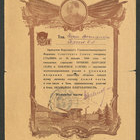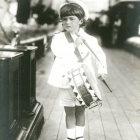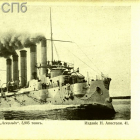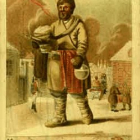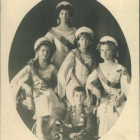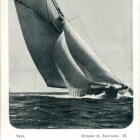Collections
-
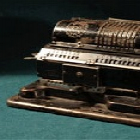 Artefacts 862Collection of artefacts is stored in the following funds: archaeological, architectural details, pieces of applied art, objects of function and everyday use, ceramics and glassware, dress and textiles, coins, weapons, science and technology items and banners.
Artefacts 862Collection of artefacts is stored in the following funds: archaeological, architectural details, pieces of applied art, objects of function and everyday use, ceramics and glassware, dress and textiles, coins, weapons, science and technology items and banners.
For information: +7(812) 232-01-06-
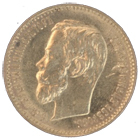 Numismatics 77More than 24 000 items.
Numismatics 77More than 24 000 items.
Collections of the numismatics fund reflect the history of St. Petersburg and Russia in general; give an idea of the political, social and cultural life of the XVIII-XX centuries and illustrate the history of the national medallic art and coinage.
-
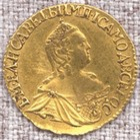 Coins 15The main part of this section is made up of pre-revolutionary coins of the period from XVIII to the beginning of the XX century, coined at the mints of St. Petersburg, Moscow and Yekaterinburg; the most interesting coins in the collection are those dating to the times of the reign of Peter I.
Coins 15The main part of this section is made up of pre-revolutionary coins of the period from XVIII to the beginning of the XX century, coined at the mints of St. Petersburg, Moscow and Yekaterinburg; the most interesting coins in the collection are those dating to the times of the reign of Peter I.
Due to an active policy of acquisition carried out in the 1970-1980-ies the ... ↓ -
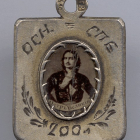 Commemorative medals and tokens of the XVIII - XX centuries 15The most interesting part of the collection presents samples of talented Russian (Timofey Ivanov, Samoilo Yudin, Fyodor Tolstoy, etc.) and foreign but working in Russia medal artists (Solomon Gouin, Johann Baltsar Gass, Carl Leberecht, Henrich Gube).
Commemorative medals and tokens of the XVIII - XX centuries 15The most interesting part of the collection presents samples of talented Russian (Timofey Ivanov, Samoilo Yudin, Fyodor Tolstoy, etc.) and foreign but working in Russia medal artists (Solomon Gouin, Johann Baltsar Gass, Carl Leberecht, Henrich Gube).
The collection displays a wide range of commemorative medals of the Soviet period. -
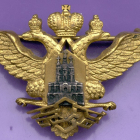 Breast signs 15This section of collection includes the signs of educational organizations (civil and military), signs of public institutions and departments, various charitable institutions, societies, unions and committees.
Breast signs 15This section of collection includes the signs of educational organizations (civil and military), signs of public institutions and departments, various charitable institutions, societies, unions and committees.
Many signs were fulfilled at high artistic level by famous Russian factories of XIX-XX centuries, such as “Edward”, Wunder brothers’, “E.Courtman”, ... ↓ -
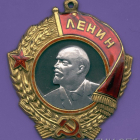 State Awards of the USSR and Russian Federation 15This section includes complexes of awards belonging to many outstanding military and political figures of Russia (Pilutov P.A., Pokrishev P.A., Zinchenko A.R., Shikin I.V.) and prominent representatives of science and culture (Lihachev D.S., Filatov A.N., Zhukovski P.M., Levinson E.A., Rudnev L.V.)
State Awards of the USSR and Russian Federation 15This section includes complexes of awards belonging to many outstanding military and political figures of Russia (Pilutov P.A., Pokrishev P.A., Zinchenko A.R., Shikin I.V.) and prominent representatives of science and culture (Lihachev D.S., Filatov A.N., Zhukovski P.M., Levinson E.A., Rudnev L.V.) -
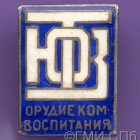 Commemorative and souvenir badges of soviet period 17The most interesting part of collection is represented by the signs and badges of 1920-1930-s, such as the signs for excellent participants of socialist competition of various ministries and departments, the signs of the 5-year-plan shock workers, the badges of voluntary societies and organizations.
Commemorative and souvenir badges of soviet period 17The most interesting part of collection is represented by the signs and badges of 1920-1930-s, such as the signs for excellent participants of socialist competition of various ministries and departments, the signs of the 5-year-plan shock workers, the badges of voluntary societies and organizations.
Thanks to the acquisition of rich collections of soviet badges from such ... ↓
-
-
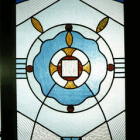 Architectural details 83Approximately 11 000 items.
Architectural details 83Approximately 11 000 items.
The history of formation of the fund may be divided into two periods - 1900-1910s (The Museum of Old Petersburg) and 1970-1980s when during reparation or demolition of old urban areas the museum received a lot of architectural objects. Chronologically the fund covers the period from the XVIII to mid-XX century.-
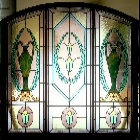 Stained-glass windows 11Decoration with stained-glass was one of the characteristic techniques in building of mid-XIX — early XX centuries in Saint-Petersburg. Though first stained-glass windows appeared in Russia in XII century, they were not widely spread. Stained-glass boom began during the reign of Nicolas I in 1820ies.
Stained-glass windows 11Decoration with stained-glass was one of the characteristic techniques in building of mid-XIX — early XX centuries in Saint-Petersburg. Though first stained-glass windows appeared in Russia in XII century, they were not widely spread. Stained-glass boom began during the reign of Nicolas I in 1820ies.
At the end of XIX — beginning of XX century the appearance of the new ... ↓ -
 Fireplaces and stoves 16Well-made fireplaces and stoves are the adornment of any room. They bring in the atmosphere of maximum comfort and coziness. Decoration with tiles is one of the remarkable branches of applied art.
Fireplaces and stoves 16Well-made fireplaces and stoves are the adornment of any room. They bring in the atmosphere of maximum comfort and coziness. Decoration with tiles is one of the remarkable branches of applied art.
Tiled stoves played a significant role in decorating of the interiors of temples, refectory chambers and living rooms. Craftsmen took the subjects for their artworks from ... ↓ -
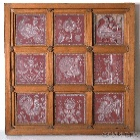 Fragments of the interiors and exteriors of buildings 21Ceramics was used in decoration of interiors and exteriors from ancient times. The greatest application of ceramics in architecture took place in modernist and neo-russian styles, which developed in late XIX — early XX centuries. Using ceramics in interiors gave high quality besides aesthetic effect, since ceramics was solid, weather-resisting and non-fading. It looked great combined with metal, ... ↓
Fragments of the interiors and exteriors of buildings 21Ceramics was used in decoration of interiors and exteriors from ancient times. The greatest application of ceramics in architecture took place in modernist and neo-russian styles, which developed in late XIX — early XX centuries. Using ceramics in interiors gave high quality besides aesthetic effect, since ceramics was solid, weather-resisting and non-fading. It looked great combined with metal, ... ↓ -
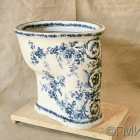 Collection of household appliances 9Various groups of sanitary ware of different firms and countries form the fund.
Collection of household appliances 9Various groups of sanitary ware of different firms and countries form the fund.
There is an interesting collection of w.c. pans and wash-bowls of English firms «Schill Seebohm & Co Ltd» and «Cauldon», the w.c.pan «Gladiator» bundled with a tank painted with blue cobalt in decalcomania technique.
The fund has marble wash-bowls, decorated by ... ↓ -
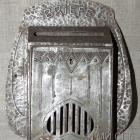 Decorative and industrial metal products 15The collection of decorative and industrial metal products of the fund includes park and garden fences, balcony barriers, holders of entrance canopies, street lamps, manhole covers, fireplace portals and furnaces, oven doors.
Decorative and industrial metal products 15The collection of decorative and industrial metal products of the fund includes park and garden fences, balcony barriers, holders of entrance canopies, street lamps, manhole covers, fireplace portals and furnaces, oven doors.
The elements of bridge decorations (the Anichkov, the Blagoveshensky bridges), the elements of the dome of the Smolny cathedral are also in the fund. ... ↓ -
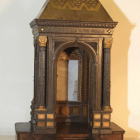 Models, reflecting the historical development of the city 11The models, kept in the fund, illustrate all the periods of development St.Petersburg as a city. They cover the period from the epoch of Peter the Great (for example, houses for different social classes) up to the second part of XX century, where one can find the projects of the Lenin stadium (1946), models “Planning of the Haven area” of 1950-ies, “Project of the 19-storey building of the 137th ... ↓
Models, reflecting the historical development of the city 11The models, kept in the fund, illustrate all the periods of development St.Petersburg as a city. They cover the period from the epoch of Peter the Great (for example, houses for different social classes) up to the second part of XX century, where one can find the projects of the Lenin stadium (1946), models “Planning of the Haven area” of 1950-ies, “Project of the 19-storey building of the 137th ... ↓
-
-
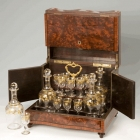 Historical household collection 83More than 15 000 items.
Historical household collection 83More than 15 000 items.
The fund presents a variety of household objects made of metal, wood, paper, ivory and stone describing the life and manners of various social groups of St.Petersburg-Petrograd-Leningrad from the middle of the XVIII century to the present.-
 Travelware 8More than 100 units.
Travelware 8More than 100 units.
The collection of travel supplies includes luggage trunks, suitcases, handbags, hat boxes and devices that can make life of travellers pleasant and easy.
Moving from place to place was an essential part of the lifestyle in the 19th century. Treatment, visiting relatives and friends, moving from winter flat to summer house and back were the ... ↓ -
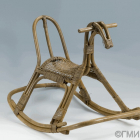 Toys and Board games 20More than 400 items.
Toys and Board games 20More than 400 items.
The collection of foreign and Russian toys of the XIX – XX centuries is small (200 units), but quite various in origin, place of manufacture and artistic merits. A typical example of expensive toy for urban children is a doll with a porcelain head and body made of leather, fabric, papier-mache. Since 1880 dolls with children's proportions prevailed in production. ... ↓-
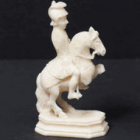 Шахматы 10Русские шахматы так называемого изобразительного типа со второй половины XVIII века делали в виде двух войск — восточного и европейского. Главными фигурами в них были турецкий султан и король, держащий в руках скипетр.
Шахматы 10Русские шахматы так называемого изобразительного типа со второй половины XVIII века делали в виде двух войск — восточного и европейского. Главными фигурами в них были турецкий султан и король, держащий в руках скипетр.
Для изготовления шахмат использовали кость мамонтовую, слоновую, моржовую, рог оленя.
Первоначально каждую фигурку вырезали вручную, но с изобретением токарного станка труд ... ↓
-
-
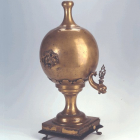 Samovars, broth-pots and cookware 8The collection includes more than 130 items among which are the examples of mass production and unique pieces.
Samovars, broth-pots and cookware 8The collection includes more than 130 items among which are the examples of mass production and unique pieces.
The bulk of the collection consists of samovars made in the second half of the nineteenth century in Tula at the factories of Batashev, Vorontsov, Reinhold and Emil Tejle, Shemarin brothers. There are also samovars with hallmarks of the Moscow, Saint Petersburg ... ↓ -
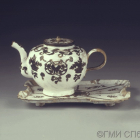 Tableware 8The historical collection contains about 1200 different types of metal tableware and cutlery.
Tableware 8The historical collection contains about 1200 different types of metal tableware and cutlery.
Among the rarest and most valuable items of the collection there is a tea set produced by the workshops of Veliky Ustyug, imitating expensive chinaware. To simulate porcelain the masters used various techniques. Metal (usually copper) shape of the objects was covered with several ... ↓ -
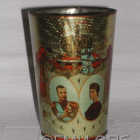 Souvenirs and gifts for jubilees 7The collection includes more than 500 samples of souvenir and gift products that are associated with important events of pre-revolutionary, Soviet and modern Russia – from the cup on the coronation of Emperor Nicholas II up to the egg "Saint-Petersburg", created recently in the workshop of Theo Faberge and gifted to our city.
Souvenirs and gifts for jubilees 7The collection includes more than 500 samples of souvenir and gift products that are associated with important events of pre-revolutionary, Soviet and modern Russia – from the cup on the coronation of Emperor Nicholas II up to the egg "Saint-Petersburg", created recently in the workshop of Theo Faberge and gifted to our city.
Souvenirs reflect national ... ↓ -
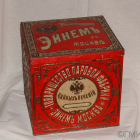 Packaging for food and industrial products 8About 1,600 units.
Packaging for food and industrial products 8About 1,600 units.
Product packaging is a very important tool to influence consumers, so every manufacturer pays special attention to it. Factory packaging with artwork began from the second half of the XIX century. From this period the packaging has become a carrier of advertising information.
Packaging the late XIX – early XX centuries (250 items) used a ... ↓ -
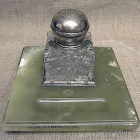 Inkstands and stationery 16Collection of inkstands has about 200 items of Russian and foreign production, made in different historical styles. Especially valuable are the author's and memorial items.
Inkstands and stationery 16Collection of inkstands has about 200 items of Russian and foreign production, made in different historical styles. Especially valuable are the author's and memorial items.
First inkstands appeared with the creation of thin canvases, such as parchment and papyrus. In Egypt and China ink for writing was made of soot and ... ↓ -
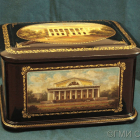 Caskets 8The collection of caskets has more than 250 objects of various shapes, styles and materials.
Caskets 8The collection of caskets has more than 250 objects of various shapes, styles and materials.
Caskets of papier-mache with lacquer paintings form a separate group of about 30 units. The art of lacquer painting originated in China and then spread to Korea, Japan, countries of Indochina, India and Persia. In Europe workshops for the production of articles painted in the ... ↓
-
-
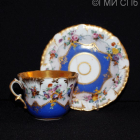 Ceramics and glassware 92More than 12 380 items.
Ceramics and glassware 92More than 12 380 items.
The fund posesses objects of artistic and historical value. These are sculptures, vases and tableware including items with views of St. Petersburg-Leningrad and its environs, with portraits and domestic scenes. Major part of the fund is presented by samples of mass production of ceramics and glass which were widely used by citizens.-
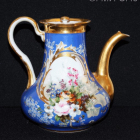 Russian ceramics 25More than 2000 units.
Russian ceramics 25More than 2000 units.
The items (over 200 units), received from the collections of the Museum of Old Petersburg (founded in 1907) and the Museum of the City (founded in 1918) formed the beginning of the collection of Russian porcelain.
Vases, decorative dishes, plates with the views of St. Petersburg, table sets, tea and coffee sets made at the state and ... ↓ -
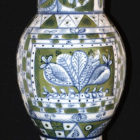 Soviet ceramics 26More than 2,500 units.
Soviet ceramics 26More than 2,500 units.
Chronological beginning of this section is presented by the items of propaganda porcelain (1918-mid 1930s) – a new direction in art, aimed to serve the promotion of the young Soviet state. The porcelain of this period was produced in minor quantities - no more than 300 copies, and was intended mainly for exhibiting at numerous international exhibitions. ... ↓ -
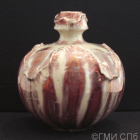 Foreign ceramics 17More than 2000 items.
Foreign ceramics 17More than 2000 items.
This section is represented by the products made in the end of XVIII - beginning of the XXI century at the factories of Western Europe.
The beginning of the collection of foreign porcelain were the items (over 100 units) received from the collections of the Museum of Old Petersburg (founded in 1907) and the Museum of the City (founded ... ↓ -
 Russian, Soviet and West-European glassware 12More than 3000 items.
Russian, Soviet and West-European glassware 12More than 3000 items.
This section includes the products made at Russian and foreign factories in the XIX and XXI centuries.
A small group form the items from the collections of the Museum of Old Petersburg (founded in 1907) and the Museum of the City (founded in 1918). For example, a glass with the engraved image of the panorama of Nevsky Prospekt from the ... ↓ -
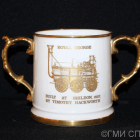 Collection of gifts 12More than 1000 units.
Collection of gifts 12More than 1000 units.
Gifts were received from various community organizations and individuals with regard to the various anniversaries of the city.
The Museum's collection includes gifts from the representatives of Leningrad - Petersburg, Kronstadt, Novgorod, Odessa, Mongolia, Central Asian republics, Ukraine, Belarus, Poland, Czech Republic, United Arab ... ↓
-
-
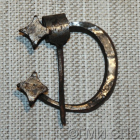 Archaeology 66More than 13,000 items.
Archaeology 66More than 13,000 items.
The archaeological collection was formed in early 1970s and was expanded with items from archaeological excavations of burial mounds, hills, sites of ancient settlements, embattled cities, etc., located on the territories of Leningrad, Pskov regions and St. Petersburg.
The excavations were funded by the Museum of the History of the ... ↓-
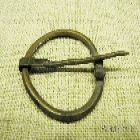 Medieval monuments of VIII — XV centuries 46This section is a part of the collection of the Fund dating back to the period of "Slavic colonization" of the North-West, the times of close contacts of the Slavs with the Finno-Ugric tribes and the Normans, and the formation of Ancient Russia.
Medieval monuments of VIII — XV centuries 46This section is a part of the collection of the Fund dating back to the period of "Slavic colonization" of the North-West, the times of close contacts of the Slavs with the Finno-Ugric tribes and the Normans, and the formation of Ancient Russia.
These are the complexes of objects found at archeological excavations of the settlement Gordets near Luga (IX-XIII ... ↓-
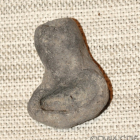
-
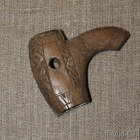
-
 Scandinavian and Finno-Ugric cultures of the IX-XIII centuries 17The collection represents jewelry and weapons
Scandinavian and Finno-Ugric cultures of the IX-XIII centuries 17The collection represents jewelry and weapons -
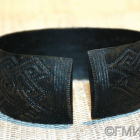 Baltic substrate of X-XII centuries 13Ornaments made of bronze, found in the Zalahtovye burial at Chudskoye lake .
Baltic substrate of X-XII centuries 13Ornaments made of bronze, found in the Zalahtovye burial at Chudskoye lake .
-
-
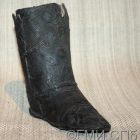 Urban medieval culture of XIII — XVII centuries 10Collection of items from Oreshek and Ivangorod is the largest in the Fund (about 7000 units from Oreshek and 2000 units from Ivangorod). It gives an idea about the history and culture of these cities-fortresses, since the moment of their construction (Oreshek in the XIV century, Ivangorod in XV century), covering the prosperous epoch of the powerful Novgorod-the-Great (Oreshek), the times of the ... ↓
Urban medieval culture of XIII — XVII centuries 10Collection of items from Oreshek and Ivangorod is the largest in the Fund (about 7000 units from Oreshek and 2000 units from Ivangorod). It gives an idea about the history and culture of these cities-fortresses, since the moment of their construction (Oreshek in the XIV century, Ivangorod in XV century), covering the prosperous epoch of the powerful Novgorod-the-Great (Oreshek), the times of the ... ↓ -
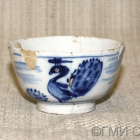 Arhaeology of XVIII-XX centuries 10Collection of objects is connected directly with the city of St. Petersburg since its foundation.
Arhaeology of XVIII-XX centuries 10Collection of objects is connected directly with the city of St. Petersburg since its foundation.
This section includes items found during archaeological excavations at the Peter-and-Paul fortress and the historical part of city, during the restoration works in the architectural monuments, and found as lifting material during excavation works as well as the objects coming ... ↓
-
-
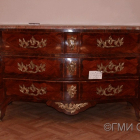 Decorative and applied arts 58About 6000 items.
Decorative and applied arts 58About 6000 items.
The collection includes objects of decorative art, interior design, industrial design, created both in Russia and in other countries in the XVIII–XX centuries and existed in Petersburg-Petrograd-Leningrad in the pre-revolutionary and Soviet periods.
The objects reveal valuable information about the era of their creation and help to reflect ... ↓-
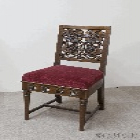 Furniture 26About 4500 items.
Furniture 26About 4500 items.
Russian household furniture of the XIX-XX centuries forms the bulk of the collection. The most valuable group are the items produced at the famous St. Petersburg furniture workshops: G. Gambs, F.F.Melzer, G.V.Buchtger, S.P.Zimin, as well as the items, based on sketches by famous architects L. Ruska, V. Stasov.
The collection also includes ... ↓ -
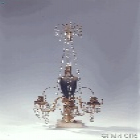 Lighting fixtures 14More than 800 items.
Lighting fixtures 14More than 800 items.
This section of the collection is varied in composition. It includes products made of gilded or patinated bronze, intended for the decoration of the front interiors, and utilitarian lighting of the the most common types: candlesticks, chandeliers, sconces, lanterns, floor lamps made of different materials (metal, porcelain, glass, wood, stone).
... ↓ -
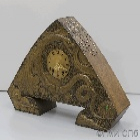 Clocks and watches 18More than 400 units.
Clocks and watches 18More than 400 units.
This section of the collection of objects of decorative art presents a variety of clocks — table, floor, wall clocks and wrist watches.
In the collection you can see the clocks made in the XVIII–XX centuries by the West-European manufacturers and also by the companies that had stores and branches in St. Petersburg (P. Buhre, F. Winter, ... ↓
-
-
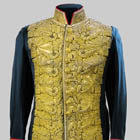 Costumes and fabrics 81More than 13 000 items.
Costumes and fabrics 81More than 13 000 items.
The fund presents items of dress, shoes, headwear and accessories of the XVIII - early XXI centuries, which allow to trace back the history of the costumes for several centuries.-
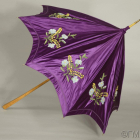 Accessories 22This section is the most diverse in its composition. The word accessory (fr. accessoire) is of French origin and refers to a small item, the associated object, supplementing the costume and allowing you to create one complete ensemble.
Accessories 22This section is the most diverse in its composition. The word accessory (fr. accessoire) is of French origin and refers to a small item, the associated object, supplementing the costume and allowing you to create one complete ensemble.
The collection includes women's, men's and kid's costume accessories of various purposes, dating back to the period from XVIIIth century ... ↓ -
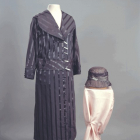 The collection of costumes 34Costume (lat. costume) - can mean clothes in general or distinctive style in clothing reflecting the social, national, regional belonging. Being an important part of the history of material and spiritual culture, it combines various kinds of decorative and applied arts — weaving, lace making, jewelry, embroidery, ornamentation, etc.
The collection of costumes 34Costume (lat. costume) - can mean clothes in general or distinctive style in clothing reflecting the social, national, regional belonging. Being an important part of the history of material and spiritual culture, it combines various kinds of decorative and applied arts — weaving, lace making, jewelry, embroidery, ornamentation, etc.
Clothing is a direct symbol of being ... ↓ -
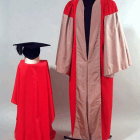 Memorial complex 25Memorial complex is an important part of the collection of the costume and fabrics. Memorial мuseum objects mean items associated with the important historical events or historical persons.
Memorial complex 25Memorial complex is an important part of the collection of the costume and fabrics. Memorial мuseum objects mean items associated with the important historical events or historical persons.
In the context of the collection Fund these persons are honored workers of science and art of the late XIX – early XX centuries, poets and writers; soldiers of the First and Second World wars, ... ↓
-
-
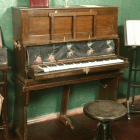 Musical instruments, equipment and sound records 692 704 items.
Musical instruments, equipment and sound records 692 704 items.
The collection stored in the fund covers the time period of the second half of the XIX - end of the XX century.-
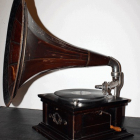 Mechanical reproducing equipment 14The fund presents mechanical musical instruments, musical boxes with scores and removable drives, phonographs and gramophones, dating back to the end of XIX — beginning of XX century
Mechanical reproducing equipment 14The fund presents mechanical musical instruments, musical boxes with scores and removable drives, phonographs and gramophones, dating back to the end of XIX — beginning of XX century -
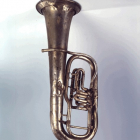 Musical instruments 14The fund presents different groups of musical instruments, dating back to the beginning and middle of the twentieth century - pianos, harmoniums, violins, guitars, harmonics, brass and percussion musical instruments of various domestic and foreign firms.
Musical instruments 14The fund presents different groups of musical instruments, dating back to the beginning and middle of the twentieth century - pianos, harmoniums, violins, guitars, harmonics, brass and percussion musical instruments of various domestic and foreign firms. -
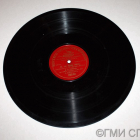 The gramophone records of 1900 - 1990-ies 41Collection of gramophone records of our Fund is extensive and diverse. We present the production of many well-known domestic and foreign manufacturers of gramophone records of XX century. There are early examples of records, made on the basis of shellac.
The gramophone records of 1900 - 1990-ies 41Collection of gramophone records of our Fund is extensive and diverse. We present the production of many well-known domestic and foreign manufacturers of gramophone records of XX century. There are early examples of records, made on the basis of shellac.
-
-
 Science and technology 107More than 8 000 items.
Science and technology 107More than 8 000 items.
The main part of the fund consists of a variety of labour-saving devices, used in urban environment or manufactured by enterprises of St. Petersburg-Petrograd-Leningrad. Timeline of the items covers the period from the middle of the XIX - end of the XX century.-
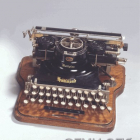 Office equipment 11The first reliable and convenient model of a typewriter appeared in 1873. The Remington factory began its production .
Office equipment 11The first reliable and convenient model of a typewriter appeared in 1873. The Remington factory began its production .
Currently the collection of typewriters has 107 items dating back to 1870-1990-ies.
The collection of calculating and computing machines consists of 45 items, including one of the first arithmometers, invented by Theophilus Odner ... ↓ -
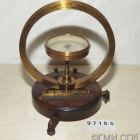 Physical devices and chemical laboratory glassware 18Physical devices and chemical laboratory glassware (items associated with the names of famous scientists - I.P. Pavlov, I.M.Sechenov, A.E.Favorski, S. V. Lebedev and others).
Physical devices and chemical laboratory glassware 18Physical devices and chemical laboratory glassware (items associated with the names of famous scientists - I.P. Pavlov, I.M.Sechenov, A.E.Favorski, S. V. Lebedev and others). -
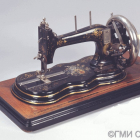 Collection of sewing machines of 1870-1990-ies 8The collection consists of 79 items. These are mainly household sewing machines, but there are also industrial ones. 34 companies producing sewing machines in the period 1870-1990-ies are represented in this collection.
Collection of sewing machines of 1870-1990-ies 8The collection consists of 79 items. These are mainly household sewing machines, but there are also industrial ones. 34 companies producing sewing machines in the period 1870-1990-ies are represented in this collection. -
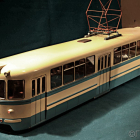 Vehicles and their models 14The fund includes cars, motorcycles and bicycles, as well as a collection of models, representing different kinds of sea, river, electric, rail and road transport and animal traction.
Vehicles and their models 14The fund includes cars, motorcycles and bicycles, as well as a collection of models, representing different kinds of sea, river, electric, rail and road transport and animal traction. -
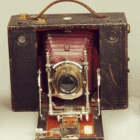 Photo and cine hardware 11The fund presents different types of film and photo cameras, enlargers, meters and devices for processing and printing: timers, processing tanks, mounting frames, etc.
Photo and cine hardware 11The fund presents different types of film and photo cameras, enlargers, meters and devices for processing and printing: timers, processing tanks, mounting frames, etc. -
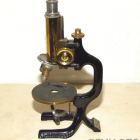 Optical devices 11The collection presents the microscopes ( 51 item dating back to 1870 - 1973-ies), binoculars - 58 items ( 1820-1981-ies), telescopes - 8 subjects (the end of XIX century - 1910-ies)
Optical devices 11The collection presents the microscopes ( 51 item dating back to 1870 - 1973-ies), binoculars - 58 items ( 1820-1981-ies), telescopes - 8 subjects (the end of XIX century - 1910-ies) -
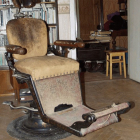 Medical instruments 10The collection includes surgical, gynecological and other tools, a variety of instruments for measuring pressure, cardiac, ophthalmic and other instruments, including the equipment of the dental office of the late XIX century
Medical instruments 10The collection includes surgical, gynecological and other tools, a variety of instruments for measuring pressure, cardiac, ophthalmic and other instruments, including the equipment of the dental office of the late XIX century -
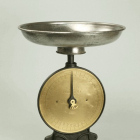 Devices for weight, volume and linear measurement 11Collection of the weight measures consists of 160 items and includes the steelyards, beam, spring, analytical and postal scales. The collection of linear measures includes meters, yards, roulettes, etc., - 105 items (1860-1970-ies)
Devices for weight, volume and linear measurement 11Collection of the weight measures consists of 160 items and includes the steelyards, beam, spring, analytical and postal scales. The collection of linear measures includes meters, yards, roulettes, etc., - 105 items (1860-1970-ies) -
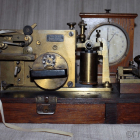 Communication equipment 12The Fund presents a collection of various radio equipment: radios, speakers, collections of telegraph and telephone apparatus, TV-sets dating back to the end 1930-1980-ies.
Communication equipment 12The Fund presents a collection of various radio equipment: radios, speakers, collections of telegraph and telephone apparatus, TV-sets dating back to the end 1930-1980-ies.
-
-
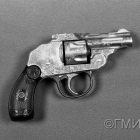
The fund contains different types of Russian and foreign firearms and cold-steal weapons, ammunition and protective arms of the XVIII-XX centuries.
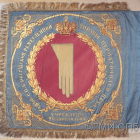
The fund keeps fabrics (excluding clothes and accessories), which reflect the history, culture and everyday life of St. Petersburg during the period of XVIII-early XXI centuries.
-
 Banners 41More than 1 000 units of storage.
Banners 41More than 1 000 units of storage.
The unique collection of banners (47 items) of the St. Petersburg handicraft workshops of XVIII-XIX centuries forms the basis of the collection. These were acquired in 1923 from the City administration.
The Fund widely presents military banners of the XIX-XX centuries; civil banners: banners of various enterprises and ... ↓-
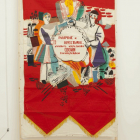 Орифламмы 14В фонде тканей и знамен хранится коллекция предметов праздничного оформления Петрограда – Ленинграда к различным юбилеям и памятным датам. Наиболее выразительными и оригинальными являются орифламмы – праздничные хоругви, которые украшали Невский проспект в дни 70-летнего юбилея Великой Октябрьской социалистической революции в 1987 году. Они были вставлены в специальные рамы и прикреплены к ... ↓
Орифламмы 14В фонде тканей и знамен хранится коллекция предметов праздничного оформления Петрограда – Ленинграда к различным юбилеям и памятным датам. Наиболее выразительными и оригинальными являются орифламмы – праздничные хоругви, которые украшали Невский проспект в дни 70-летнего юбилея Великой Октябрьской социалистической революции в 1987 году. Они были вставлены в специальные рамы и прикреплены к ... ↓
-
-
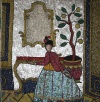 Collection of interior fabric items of the XVIII - XX centuries 175 000 units. Includes typical subjects of interior: floor and wall carpets, decorative panels, tapestries, fireplace screens, tablecloths, lace products, sewing, beading, embroidery, etc.
Collection of interior fabric items of the XVIII - XX centuries 175 000 units. Includes typical subjects of interior: floor and wall carpets, decorative panels, tapestries, fireplace screens, tablecloths, lace products, sewing, beading, embroidery, etc. -

-
 Collection of cotton fabrics of V.F. Zeits 14250 units. The collection includes samples of cotton fabrics of the I-st third of the XX century, Russia, Ivanovo-Voznesensk.
Collection of cotton fabrics of V.F. Zeits 14250 units. The collection includes samples of cotton fabrics of the I-st third of the XX century, Russia, Ivanovo-Voznesensk. -
 Collection of tissue samples from the "Thornton's Woollen Products Co" - "Nevskaya Manufactory" 10The collection includes samples of wool fabrics of the 2-nd half of XIX - early XXI centuries.
Collection of tissue samples from the "Thornton's Woollen Products Co" - "Nevskaya Manufactory" 10The collection includes samples of wool fabrics of the 2-nd half of XIX - early XXI centuries.
-
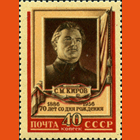
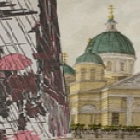
For information: +7 (812) 230-83-92
-
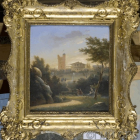 Painting and graphics of the history of the city 79About 43 000 items. One of the oldest collections in the museum, existing since the foundation of the Museum of Old Petersburg in 1907.
Painting and graphics of the history of the city 79About 43 000 items. One of the oldest collections in the museum, existing since the foundation of the Museum of Old Petersburg in 1907.
The main sources of its replenishment - collections of imperial and grand ducal palaces, collections of Prince Vladimir Argutinskii-Dolgorukov, Pyotr Veiner, Alexander Haush, Lev Ilin and gifts from ... ↓-
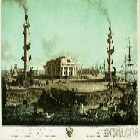 Engravings 13The collection of engravings preserves the sheets, executed by A. F. Zubov, I. Schonebeck, the samples of the Peter's era, panoramas of St. Petersburg and its environs in the middle of the XVIII century by M. I. Makhaev, as well as engraved views of St. Petersburg and its suburbs in the first quarter of the XIX century by D. Atkinson, B. Patersen, C. F. Galaktionov and the city views of the ... ↓
Engravings 13The collection of engravings preserves the sheets, executed by A. F. Zubov, I. Schonebeck, the samples of the Peter's era, panoramas of St. Petersburg and its environs in the middle of the XVIII century by M. I. Makhaev, as well as engraved views of St. Petersburg and its suburbs in the first quarter of the XIX century by D. Atkinson, B. Patersen, C. F. Galaktionov and the city views of the ... ↓ -
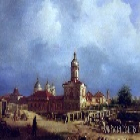 Paintings 14The collection of paintings includes works of famous St. Petersburg artists F. Y. Alexeev, M. N. Vorobyov, A. M. Maksimov, I.N. Kramskoy, I.K. Aivazovsky, the works of the artists of the Russian avant-garde M. V. Matyushin and E.I. Guro, and picturesque shopping signs of the early XX century.
Paintings 14The collection of paintings includes works of famous St. Petersburg artists F. Y. Alexeev, M. N. Vorobyov, A. M. Maksimov, I.N. Kramskoy, I.K. Aivazovsky, the works of the artists of the Russian avant-garde M. V. Matyushin and E.I. Guro, and picturesque shopping signs of the early XX century. -
 Drawings 20In the collection of drawings there are landscapes of St. Petersburg, genre sketches, portraits. Among the famous authors are J.B. De La Traverse, I.I. Charlemaine, V.S. Sadovnikov, Alex. N. Benoit, P. E. Scherbov and many others.
Drawings 20In the collection of drawings there are landscapes of St. Petersburg, genre sketches, portraits. Among the famous authors are J.B. De La Traverse, I.I. Charlemaine, V.S. Sadovnikov, Alex. N. Benoit, P. E. Scherbov and many others. -
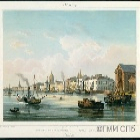 Lithographs 17Collection of lithographs can be considered quite complete because it includes views of St. Petersburg of different periods, the city panoramas, genre scenes and portraits.
Lithographs 17Collection of lithographs can be considered quite complete because it includes views of St. Petersburg of different periods, the city panoramas, genre scenes and portraits. -
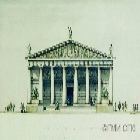 Architectural drawings 15In the section of architectural graphics there are projects and drawings of the famous St. Petersburg architects of the XVIII and XIX centuries: F.-B. Rastrelli, I. E. Starov, A. Rinaldi, J. Quarenghi, A. D. Zakharov, A. N. Voronikhin, K. Rossi, O. Montferrand, A. I. Stackenschneider and many others. The St. Petersburg’s architecture of the XX century is presented by the projects of L. A. Ilyin, ... ↓
Architectural drawings 15In the section of architectural graphics there are projects and drawings of the famous St. Petersburg architects of the XVIII and XIX centuries: F.-B. Rastrelli, I. E. Starov, A. Rinaldi, J. Quarenghi, A. D. Zakharov, A. N. Voronikhin, K. Rossi, O. Montferrand, A. I. Stackenschneider and many others. The St. Petersburg’s architecture of the XX century is presented by the projects of L. A. Ilyin, ... ↓
-
-
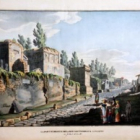 Paintings and graphics of cities of the world 70About 30 000 items.
Paintings and graphics of cities of the world 70About 30 000 items.
The collection includes works of the XVI – early XX centuries. The main sources of replenishment - the collections of imperial and grand-ducal palaces, St. Petersburg’s mansions and private collections.
Among the exhibits of the fund there are the engravings of special value by Stefano Du Perac, Jacques Rigaud, Giovanni Battista Piranesi ... ↓-
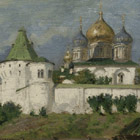 Paintings 15
Paintings 15Art collection of the Fund has 254 paintings dating back to XIX – XX centuries. It presents paintings and sketches of the domestic and Western European masters.
The main and the best part of the works was acquired from the Petersburg art collections. Among the authors of paintings are the names of I.F.Alexandrovsky, A.P.Bogolyubov, I. A.Weiss, J. de ... ↓ -
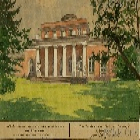 Drawings 15The collection presents the works of I. E. Repin, G. K. Lukomsky, I. I. Shishkin, L. O. Premazzi, architects Y. G. Gevirtz, R. A. Goedicke, A. A. Ol
Drawings 15The collection presents the works of I. E. Repin, G. K. Lukomsky, I. I. Shishkin, L. O. Premazzi, architects Y. G. Gevirtz, R. A. Goedicke, A. A. Ol -
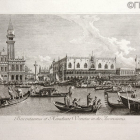 Engravings 25The collection of engravings has 20217 items and chronologically covers the period from the late sixteenth to mid-twentieth century. The urban views of Europe, Asia, Africa, North and South America form the largest part of the collection. In addition, there are images of ancient monuments, as well as prints based on paintings of various genres. Of the most famous European engravers-vedutists ... ↓
Engravings 25The collection of engravings has 20217 items and chronologically covers the period from the late sixteenth to mid-twentieth century. The urban views of Europe, Asia, Africa, North and South America form the largest part of the collection. In addition, there are images of ancient monuments, as well as prints based on paintings of various genres. Of the most famous European engravers-vedutists ... ↓ -
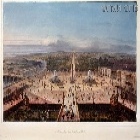 Lythographs 15Collection of lithographs of the Fund has 6698 images dating back to XIX – XX centuries.
Lythographs 15Collection of lithographs of the Fund has 6698 images dating back to XIX – XX centuries.
Most of the collection consists of cityscapes and views of natural wonders of Western Europe, Asia, the Middle East and America. Views of the cities of Russian Empire: Moscow, Vladimir, Novgorod, Kazan, Kiev, Kostroma, Nizhny Novgorod, Odessa, Pskov, Romanovo-Borisoglebsk, Rybinsk, ... ↓
-
-
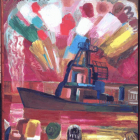 Contemporary painting and graphics 71More than 27 000 items. The collection of the contemporary painting and graphics stores the works of Leningrad - St. Petersburg artists of the XX-XXI centuries. All types of prints, drawings, watercolors, gouache, tempera and paintings are represented in this collection. A significant part of the collection is occupied by works devoted to the Great Patriotic War and the Siege of Leningrad. ... ↓
Contemporary painting and graphics 71More than 27 000 items. The collection of the contemporary painting and graphics stores the works of Leningrad - St. Petersburg artists of the XX-XXI centuries. All types of prints, drawings, watercolors, gouache, tempera and paintings are represented in this collection. A significant part of the collection is occupied by works devoted to the Great Patriotic War and the Siege of Leningrad. ... ↓-
 Paintings 25The collection of paintings includes two thousand works of art in the technique of oil painting on various surfaces (canvas, wood, hardboard, cardboard, paper). The figurative and abstract paintings in various genres are stored: landscapes (mostly urban), portraits, historical, genre painting, still lifes.
Paintings 25The collection of paintings includes two thousand works of art in the technique of oil painting on various surfaces (canvas, wood, hardboard, cardboard, paper). The figurative and abstract paintings in various genres are stored: landscapes (mostly urban), portraits, historical, genre painting, still lifes. -
 Watercolours and drawings 14Раздел «рисунок, акварель» объединяет более 15000 произведений изобразительного искусства, исполненных в технике акварели, гуаши, туши, различных видов карандашей, в том числе сангины и сухой пастели, а также в смешанной технике.
Watercolours and drawings 14Раздел «рисунок, акварель» объединяет более 15000 произведений изобразительного искусства, исполненных в технике акварели, гуаши, туши, различных видов карандашей, в том числе сангины и сухой пастели, а также в смешанной технике.
Представлены различные жанры: городской пейзаж, портрет, натюрморт, жанровые композиции, архитектурные зарисовки, эскизы праздничного оформления города, эскизы ... ↓ -
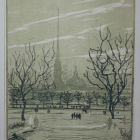 Prints and lithographs 32Разделы «гравюры» и «литографии», имеющие общее название – эстамп, насчитывают около 6000 произведений, выполненных в технике высокой, глубокой, плоской и трафаретной печати (это офорт, акватинта, линогравюра, ксилография, монотипия, шелкография, литография).
Prints and lithographs 32Разделы «гравюры» и «литографии», имеющие общее название – эстамп, насчитывают около 6000 произведений, выполненных в технике высокой, глубокой, плоской и трафаретной печати (это офорт, акватинта, линогравюра, ксилография, монотипия, шелкография, литография).
В собрании представлены произведения ярких представителей ленинградской графической школы, таких как Е.С. Кругликова, П.А. ... ↓
-
-
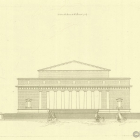 Architectural graphics and cartography 41More than 17 000 items. Fund of architectural graphics and cartography is a collection of museum objects which reflect the history of the world urban construction.
Architectural graphics and cartography 41More than 17 000 items. Fund of architectural graphics and cartography is a collection of museum objects which reflect the history of the world urban construction.-
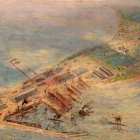 Architectural drawings of the XVIII-XX centuries 19The handwritten drawings, engraved and lithographed sketches
Architectural drawings of the XVIII-XX centuries 19The handwritten drawings, engraved and lithographed sketches -
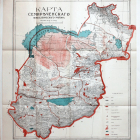 Collection of maps and plans of European and Russian cities in XVIII-XX centuries 22The collection of maps and atlases
Collection of maps and plans of European and Russian cities in XVIII-XX centuries 22The collection of maps and atlases
-
-
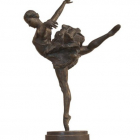 Sculptures 90Fund of sculpture has more than 1,000 items and includes sculptural works of Russian, Soviet and foreign artists from the second half of the XVIII century to the beginning of the XXI century.
Sculptures 90Fund of sculpture has more than 1,000 items and includes sculptural works of Russian, Soviet and foreign artists from the second half of the XVIII century to the beginning of the XXI century.-
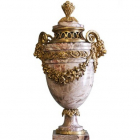 Russian sculpture of the XIX - beginning of the XX century 13This period is represented by 318 items in the collection.
Russian sculpture of the XIX - beginning of the XX century 13This period is represented by 318 items in the collection.
More than 50 of them came from the Museum of Old Petersburg and the Museum of the City, including the gifts of the famous architect, Chairman of the society of architects-artists, count P.Y.Suzor, President of the Museum Council, the publisher of the magazine "Old years" P.P.Weiner, a member of the ... ↓ -
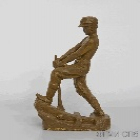 Russian and Soviet sculpture of the XX-XXI centuries 60This section mainly presents the works by St. Petersburg sculptors.
Russian and Soviet sculpture of the XX-XXI centuries 60This section mainly presents the works by St. Petersburg sculptors.
A large group of sculptures were received from the Museum of Defense of Leningrad after its liquidation in 1949. These are the portraits of the defenders of Leningrad: pilots V.A.Matsievich, I.M.Shishkan, S.G.Litavrin, partisans: C.D.Karitskoy, A.W.Herman, B.I.Eren-Price, A.Petrova, Junior girls - air ... ↓ -
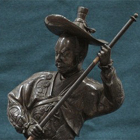 Sculpture of foreign countries 17This section has a little over 200 units.
Sculpture of foreign countries 17This section has a little over 200 units.
The objects, typical for the interior decoration of the St. Petersburg houses in XIX – early XX centuries, which reflect the tastes of different segments of the population form the bulk of the collection.
The gifts to the city from foreign delegations of about twenty countries worldwide form a separate ... ↓
-
-
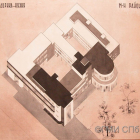 Collection of modern architectural graphics 44
Collection of modern architectural graphics 44About 11,000 storage units.
The collection consists of design materials related to the planning, development and improvement of Leningrad-Petersburg, as well as projects developed by St. Petersburg architects for other cities.
Chronological framework of the collection - 1917-1990s.
... ↓
The collection began to take shape in the 1920s in the Architectural Department and the Department of Communal and Social Hygiene of the Museum of the City. The creator and first director of the museum, Lev Aleksandrovich Ilyin, was simultaneously the creator and head of the Leningrad Redevelopment Commission. The Commission itself was founded in 1923 at the Museum of the City and only in 1925 it became subordinate to the Petrograd Provincial Executive Committee. The basis of the initial collection was the materials from the archive of architectural graphics of the Urban Development Commission of the Sovkomhoz, transferred to the museum in 1923. Later, the collection was replenished with materials for the settlement of the plan of Petrograd and its outskirts (which were worked out by a group of architects under the direction of L.A.Ilyin) and materials of architectural competitions held by the Otkomkhoz (Department of Communal Services) of the Leningrad City Council. In 1938, during the reorganization of the museum, which became the Museum of the History and Development of Leningrad, a significant part of the materials was lost (decommissioned, sold out, transferred to other museums). However, the collection continued to be actively replenished by proceeds from private collections and from design organizations in Leningrad.
The collection of the fund can be divided into 5 chronological and stylistic groups.
The first one is composed of early post-revolutionary projects, most of which have not been implemented. Stylistically, most of them are connected with the search for the lapidary language of the "new classic". These include projects of the first Soviet architectural competitions in Petrograd-Leningrad, landscaping projects and the creation of urban communications networks, projects of typical buildings for various purposes.
Architectural projects of the second half of the 1920s - early 1930s reflect the avant-garde period of the development of Soviet architecture. Our museum has the most studied and probably the richest collection of architectural graphics of the Leningrad avant-garde. The same period (and partly the previous one) includes a group of materials created by the employees of the Otkomkhoz of Lensovet directly for the expositions in our museum. These objects reflect not only the history of the city and the graphics of the avant-garde era, but also that period in the history of our museum, when it served as one of the first centers in the world for the comprehensive study and design of the urban structure and environment, what we now call “urban studies”.
In the complex of materials of the 1930s and first half of the 1950s, projects of quarterly development of Moscow Avenue and the creation of a new city center, projects of public buildings such as the Udarnik House (architect N.A.Trotsky), the House of the Medical Worker (architect N.A.Miturich), competitive projects of the lighthouse monument in the Leningrad port (authors I.G.Langbard, N.A.Trotsky and others), competitive projects of the House of Soviets.
The post-war period includes projects for the restoration of old houses that were destroyed during the Great Patriotic War and large-scale, mostly low-rise, new residential construction, projects of the first stations of the Leningrad Metro. This period is fairly well and fully represented in the collection by the projects of architects L.V.Rudnev, V.A.Kamensky, K.L.Johansen, A.I.Lapirov, B.N.Zhuravlev, A.V.Zhuk, E.N.Sandler, A.K.Andreev, M.Y.Klimentov, and many others.
The era of Leningrad architectural modernism - 1960-1980s is represented quite fully in the collection. These are projects of residential buildings, public buildings, memorial complexes, layouts of blocks under construction, interior design projects. In this part of the collection it is worth noting the representative complexes of works by architects G.P.Morozov, N.M.Zakharyina, S.I.Evdokimov, I.N.Kuskov, E.M.Poltoratsky, V.N.Sherbin.
The post-Soviet period of the architecture of St.Petersburg is currently presented in the collection only by several dozen sheets. Nevertheless, this part of the collection reflects various aspects of St.Petersburg’s architecture - from residential buildings and restaurants to metro stations and memorial complexes.
Of course, the work of most architects cannot be fully integrated in a given period. Such masters as A.S.Nikolsky, N.A.Trotsky, A.I.Gegello, I.G.Langbard, A. A.Ol, S.B.Speransky, I.I.Fomin, N.A.Miturich, A.I.Lapirov, E.A.Levinson, K.L.Johansen, I.M.Tchaiko, M.A.Shepilevsky, D.P.Buryshkin, D.S.Goldgor and some others are well represented in the collection by works of different stylistic eras. ↑-
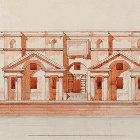 Архитектура первых послереволюционных лет 7Проекты этого времени в большинстве своем остались нереализованными. Стилистически большинство из них связанно с поисками лапидарного языка «новой классики». Сюда относятся проекты первых советских архитектурных конкурсов в Петрограде-Ленинграде, проекты озеленений и создания сетей городских коммуникаций, проекты типовых зданий самого разного ... ↓
Архитектура первых послереволюционных лет 7Проекты этого времени в большинстве своем остались нереализованными. Стилистически большинство из них связанно с поисками лапидарного языка «новой классики». Сюда относятся проекты первых советских архитектурных конкурсов в Петрограде-Ленинграде, проекты озеленений и создания сетей городских коммуникаций, проекты типовых зданий самого разного ... ↓ -
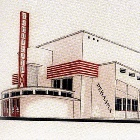 Архитектурные проекты второй половины 1920х - начала 1930х годов 7Произведения этого периода отражают авангардный период развития советской архитектуры. Наш музей обладает наиболее изученной и, вероятно, наиболее богатой коллекцией архитектурной графики ленинградского авангарда. К этому же периоду (и, отчасти, к предшествующему) относится группа материалов, создававшихся сотрудниками Откомхоза Ленсовета непосредственно для экспозиций нашего музея. Эти предметы ... ↓
Архитектурные проекты второй половины 1920х - начала 1930х годов 7Произведения этого периода отражают авангардный период развития советской архитектуры. Наш музей обладает наиболее изученной и, вероятно, наиболее богатой коллекцией архитектурной графики ленинградского авангарда. К этому же периоду (и, отчасти, к предшествующему) относится группа материалов, создававшихся сотрудниками Откомхоза Ленсовета непосредственно для экспозиций нашего музея. Эти предметы ... ↓ -
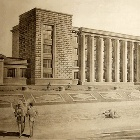 Проекты 30х – первой половины 50х годов 7В этом комплексе следует выделить проекты поквартальной застройки Московского проспекта и создания нового городского центра, проекты зданий общественного назначения, таких как Дом Ударника (арх. Н.А.Троцкий), Дом Медработника (арх. Н.А.Митурич), конкурсные проекты памятника-маяка в ленинградском порту (авторы И.Г.Лангбард, Н.А.Троцкий и др.), конкурсные проекты Дома Советов. К послевоенному ... ↓
Проекты 30х – первой половины 50х годов 7В этом комплексе следует выделить проекты поквартальной застройки Московского проспекта и создания нового городского центра, проекты зданий общественного назначения, таких как Дом Ударника (арх. Н.А.Троцкий), Дом Медработника (арх. Н.А.Митурич), конкурсные проекты памятника-маяка в ленинградском порту (авторы И.Г.Лангбард, Н.А.Троцкий и др.), конкурсные проекты Дома Советов. К послевоенному ... ↓ -
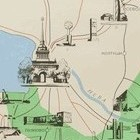 Коллекция карт и планов 10Коллекция карт и планов в Фонде современной архитектурной графики представлена более чем 500 листами. Она включает в себя как типографские издания карт Петрограда/Ленинграда/Петербурга и его окрестностей, так и оригинальные графические работы. Среди последних есть проекты планировок развития городской инфраструктуры.
Коллекция карт и планов 10Коллекция карт и планов в Фонде современной архитектурной графики представлена более чем 500 листами. Она включает в себя как типографские издания карт Петрограда/Ленинграда/Петербурга и его окрестностей, так и оригинальные графические работы. Среди последних есть проекты планировок развития городской инфраструктуры.
Значительная часть этой коллекции связана непосредственно с Музеем Города и ... ↓ -
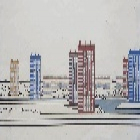 Ленинградский архитектурный модернизм 1960-1980-е годы 7Данная эпоха в фонде представлена многогранно и достаточно полно. Это и проекты жилых домов, и общественные сооружения, и мемориальные комплексы, и планировки строящихся кварталов, и проекты оформления интерьеров. В этой части коллекции стоит отметить представительные комплексы работ архитекторов Г.П.Морозова, Н.М.Захарьиной, С.И.Евдокимова, И.Н.Кускова, Е.М.Полторацкого, ... ↓
Ленинградский архитектурный модернизм 1960-1980-е годы 7Данная эпоха в фонде представлена многогранно и достаточно полно. Это и проекты жилых домов, и общественные сооружения, и мемориальные комплексы, и планировки строящихся кварталов, и проекты оформления интерьеров. В этой части коллекции стоит отметить представительные комплексы работ архитекторов Г.П.Морозова, Н.М.Захарьиной, С.И.Евдокимова, И.Н.Кускова, Е.М.Полторацкого, ... ↓ -
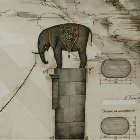 Постсоветский период архитектуры Санкт-Петербурга 6На данный момент этот период представлен в собрании относительно скромно – несколько десятков листов. Тем не менее, эта часть собрания отражает различные аспекты петербургской архитектуры – от жилых домов и ресторанов до станций метро и мемориальных ... ↓
Постсоветский период архитектуры Санкт-Петербурга 6На данный момент этот период представлен в собрании относительно скромно – несколько десятков листов. Тем не менее, эта часть собрания отражает различные аспекты петербургской архитектуры – от жилых домов и ресторанов до станций метро и мемориальных ... ↓
-
-
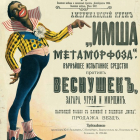 Replicated graphics 97The fund of replicated graphics was separated into an independent unit in 1981. The fund includes a collection of posters, playbills, programs, invitations, menus, labels and calendars. The core of the fund is formed from the collections of the Museum of Old Petersburg, City Museum and Museum of the Defense of Leningrad
Replicated graphics 97The fund of replicated graphics was separated into an independent unit in 1981. The fund includes a collection of posters, playbills, programs, invitations, menus, labels and calendars. The core of the fund is formed from the collections of the Museum of Old Petersburg, City Museum and Museum of the Defense of Leningrad-
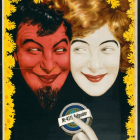 Posters of the pre-revolutionary period 102 400 units. The collection presents different types of posters, published in pre-revolutionary Russia in the printing house "Association of R.Golike and A. Vilborg", chromolithographic factories of T. Kibbel and of E. Marcus and other print institutions of St.Petersburg.
Posters of the pre-revolutionary period 102 400 units. The collection presents different types of posters, published in pre-revolutionary Russia in the printing house "Association of R.Golike and A. Vilborg", chromolithographic factories of T. Kibbel and of E. Marcus and other print institutions of St.Petersburg. -
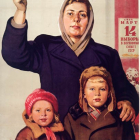 Posters of the Soviet period 23The State Museum of St. Petersburg has formed a unique collection of Soviet posters, numbering about 15,000 items. The collection covers the period from 1918, from the appearance of the first Soviet political posters, to present days.
Posters of the Soviet period 23The State Museum of St. Petersburg has formed a unique collection of Soviet posters, numbering about 15,000 items. The collection covers the period from 1918, from the appearance of the first Soviet political posters, to present days.
The collection was based on items moved from the State Hermitage, the State Public Library, the Museum of Defense of Leningrad, a branch of ... ↓ -
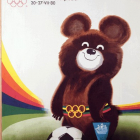 Posters, programs, invitations 20The materials cover the period from the end of the XIX century to the present day and have more than 20 thousand storage units.
Posters, programs, invitations 20The materials cover the period from the end of the XIX century to the present day and have more than 20 thousand storage units.
Pre-revolutionary materials show the variety of theatrical, exhibition, musical, literary life of the capital. Along with posters of outstanding productions of the Imperial theaters, there are also posters and programs of theaters that were ... ↓ -
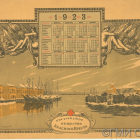 Calendars 11More than 500 copies of the wall, flip, souvenir (with ads of trading firms of Petersburg), "eternal" calendars. Chronologically the collection covers the period of 1880-ies - beginning of the XXI century.
Calendars 11More than 500 copies of the wall, flip, souvenir (with ads of trading firms of Petersburg), "eternal" calendars. Chronologically the collection covers the period of 1880-ies - beginning of the XXI century. -
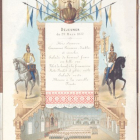 Menus 10The collection of menus, numbering about 500 items, was taken to the Museum since the creation of the Museum of Old Petersburg. It is one of the best in the country.
Menus 10The collection of menus, numbering about 500 items, was taken to the Museum since the creation of the Museum of Old Petersburg. It is one of the best in the country. -
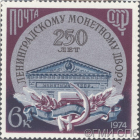 Stamps 11The collection of the postage stamps; police stamps and address fees; municipal stamps, savings, charitable stamps, etc.
Stamps 11The collection of the postage stamps; police stamps and address fees; municipal stamps, savings, charitable stamps, etc. -
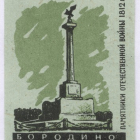 Labels 12The labels collection presents the pre-revolutionary and post-revolutionary periods (end of XIX - the beginning of XXI century) and has more than 9,000 items.
Labels 12The labels collection presents the pre-revolutionary and post-revolutionary periods (end of XIX - the beginning of XXI century) and has more than 9,000 items.
-
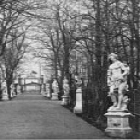
For information: +7 (812) 230-03-21
-
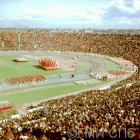 Negatives 72About 100 000 items. The collection stores negatives covering the history of St. Petersburg of the late XIX-early XXI century.
Negatives 72About 100 000 items. The collection stores negatives covering the history of St. Petersburg of the late XIX-early XXI century.-
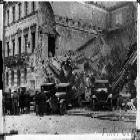 Leningrad under siege 24The State Museum of History of St.Petersburg, the Fund of the negatives presents the period of the siege of Leningrad during the great Patriotic war (1941-1945). The images were made in Leningrad by military photographers D. M. Trachtenberg, V. I. Kapustin, B. V. Utkin, G. I. Chertov, B. S. Losin, V. G. Fedoseyev, N. P.Janov.
Leningrad under siege 24The State Museum of History of St.Petersburg, the Fund of the negatives presents the period of the siege of Leningrad during the great Patriotic war (1941-1945). The images were made in Leningrad by military photographers D. M. Trachtenberg, V. I. Kapustin, B. V. Utkin, G. I. Chertov, B. S. Losin, V. G. Fedoseyev, N. P.Janov.
The presented negatives reflect the life of ... ↓ -
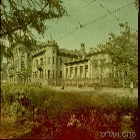 Architecture of St.Petersburg – Leningrad 9
Architecture of St.Petersburg – Leningrad 9
The State Museum of History of St. Petersburg owns a unique collection of original negatives, reflecting the history of our city in different aspects. The collection of negatives depicting the architectural ensembles of St. Petersburg has a special place among them. Photos were made in different years, by Leningrad-known photographers such as L.O.Bernstein, S.I.Lavut, B.S.Losin and ... ↓ -
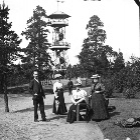 Leningrad region 9The collection of negatives of the GMI of St. Petersburg helps to recreate the appearance of the Leningrad Region in the period of the 1950s - 1980s.
Leningrad region 9The collection of negatives of the GMI of St. Petersburg helps to recreate the appearance of the Leningrad Region in the period of the 1950s - 1980s.
In the Fund of negatives, this is one of the most significant and interesting sections. Here are diverse aspects: industrial, spa, cultural and educational, economic.
Also, the Leningrad Region ... ↓ -
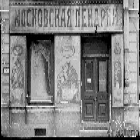 Municipal services of Petrograd-Leningrad 9The main part of this section includes photos of enterprises of heavy, chemical and light industry, electricity and gas supply of the city, housing, roadwork, transport, hotels, trade, catering, communications (telephone and mail), cleaning and street lighting, sewers and plumbing.
Municipal services of Petrograd-Leningrad 9The main part of this section includes photos of enterprises of heavy, chemical and light industry, electricity and gas supply of the city, housing, roadwork, transport, hotels, trade, catering, communications (telephone and mail), cleaning and street lighting, sewers and plumbing.
This section shows the various stages of the development of Leningrad, including the period ... ↓ -
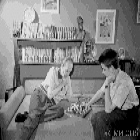 Culture and art in Leningrad 10The cultural aspect of Leningrad’s life is presented here. A large number of cultural and educational institutions were concentrated in the city - palaces and houses of culture (including the Youth Palace), houses of creativity, libraries, clubs, city museums, theaters and cinemas, exhibition halls, concert and music institutions (Philharmonic, Academic chapel, concert halls), the media ... ↓
Culture and art in Leningrad 10The cultural aspect of Leningrad’s life is presented here. A large number of cultural and educational institutions were concentrated in the city - palaces and houses of culture (including the Youth Palace), houses of creativity, libraries, clubs, city museums, theaters and cinemas, exhibition halls, concert and music institutions (Philharmonic, Academic chapel, concert halls), the media ... ↓ -
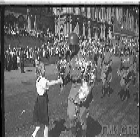 Festivals and parades in Leningrad 10This section introduces us to various cultural events that were held in the city of Leningrad.
Festivals and parades in Leningrad 10This section introduces us to various cultural events that were held in the city of Leningrad.
These include carnival processions, balls, festivities, song festivals, the holiday "Scarlet Sails", May Day demonstrations, May 9 parades, celebrations of the October Revolution date, the festive decoration of the city.
The works of such ... ↓
-
-
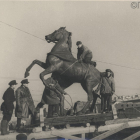 Collection of photographs 68More than 84 000 items. A rich in volume and diversity collection of art and historical sources on the history of St. Petersburg. The collection consists of two parts: photographs of pre-revolutionary and post-revolutionary periods.
Collection of photographs 68More than 84 000 items. A rich in volume and diversity collection of art and historical sources on the history of St. Petersburg. The collection consists of two parts: photographs of pre-revolutionary and post-revolutionary periods.-
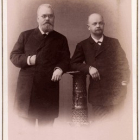 Photographs of the pre-revolutionary period 34More than 24 000 units The most important exhibits include photos of such famous authors as I. (J.) Bianchi (1850-1880), K. K. Bulla (1890-1910), C. L. and L. C. Lewicki, A. I. Denier, A. F. Lawrence, W. Classen, F. V. Nicholaevsky.
Photographs of the pre-revolutionary period 34More than 24 000 units The most important exhibits include photos of such famous authors as I. (J.) Bianchi (1850-1880), K. K. Bulla (1890-1910), C. L. and L. C. Lewicki, A. I. Denier, A. F. Lawrence, W. Classen, F. V. Nicholaevsky.
The history of the collection of photographs in the Museum dates back to 1907, when St. Petersburg the ... ↓ -
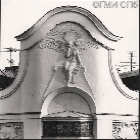 Photographs created after 1917 34About 60 000 units. Throughout the XXth century the Museum has acquired or received as a gift the works of the best artists-photographers and photojournalists of St. Petersburg. In addition, the materials came from LenTASS, personal archives of residents and from customs. A large collection of photos of 1941-1945 was donated directly by military photographers. It includes works by famous ... ↓
Photographs created after 1917 34About 60 000 units. Throughout the XXth century the Museum has acquired or received as a gift the works of the best artists-photographers and photojournalists of St. Petersburg. In addition, the materials came from LenTASS, personal archives of residents and from customs. A large collection of photos of 1941-1945 was donated directly by military photographers. It includes works by famous ... ↓
-
-
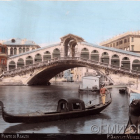 Cities of the world 67More than 44 000 items. The fund consists of original photographs of the 1850 - 2000s and photomechanical prints (collotypes, photo chromolithographs, etc.) of the 1870 – 1960s.
Cities of the world 67More than 44 000 items. The fund consists of original photographs of the 1850 - 2000s and photomechanical prints (collotypes, photo chromolithographs, etc.) of the 1870 – 1960s.-
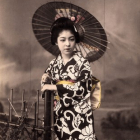 Cities of the world in photographs 2028 587 units. The collection of photographs of the cities of the world is the unique collection of West-European photography of 1850s - 1900-ies, which presents the views of the cities of Italy, Austria, Germany, Spain, France, Great Britain made by such masters, as Alfredo Noack, Giacomo Broggi, Giorgio Sommer, brothers Nerden, Axel Lindahl, Ludwig Hardtmut, Ramon Almela, Francis Fritt and many ... ↓
Cities of the world in photographs 2028 587 units. The collection of photographs of the cities of the world is the unique collection of West-European photography of 1850s - 1900-ies, which presents the views of the cities of Italy, Austria, Germany, Spain, France, Great Britain made by such masters, as Alfredo Noack, Giacomo Broggi, Giorgio Sommer, brothers Nerden, Axel Lindahl, Ludwig Hardtmut, Ramon Almela, Francis Fritt and many ... ↓ -
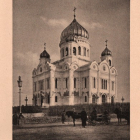 Cities of the world — photomechanical prints 4716 404 units. In addition to the collection of photographs the department contains more than 16000 photomechanical prints — landscapes, genre scenes and portraits and printed albums of the late 1870-ies-1960-ies. This collection is devoted to the countries of Western and Eastern Europe, USA and East Asian regions and widely presents not only cities, but also life and culture of different ... ↓
Cities of the world — photomechanical prints 4716 404 units. In addition to the collection of photographs the department contains more than 16000 photomechanical prints — landscapes, genre scenes and portraits and printed albums of the late 1870-ies-1960-ies. This collection is devoted to the countries of Western and Eastern Europe, USA and East Asian regions and widely presents not only cities, but also life and culture of different ... ↓
-
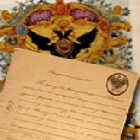
For information: +7 (812) 498-07-53
-
 Collection of books 21The books fund includes more than 45 000 items. The chronological framework of the collection: end of the XVII century - beginning of the XXI century.
Collection of books 21The books fund includes more than 45 000 items. The chronological framework of the collection: end of the XVII century - beginning of the XXI century. -
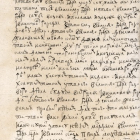 Collection of manuscripts and documents 69Collection of the Manuscript and Documentary Fund of the museum consists of original documents of the history of St. Petersburg beginning with foundation of the city to the present day.
Collection of manuscripts and documents 69Collection of the Manuscript and Documentary Fund of the museum consists of original documents of the history of St. Petersburg beginning with foundation of the city to the present day.-
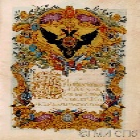 Documents of the XVIII century 10
Documents of the XVIII century 10
Documents of the XVIII century in the collection of the Fund are presented mainly by charters on parchment with the signatures-autographs of the Empresses Elizabeth and Catherine II, patents for rank, both military and civil, printed copies of the Imperial and Senate decrees. -
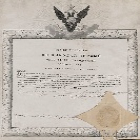 Documents of the XIX century 17A significant part of the documents of the first half of the XIX century reflects the events associated with the uprising of the Decembrists: the Manifest of abdication of Grand Duke Konstantin Pavlovich in favor of Nicholas Pavlovich, "The List of the State Criminals", a handwritten copy of K.F.Ryleev’s letter before his execution.
Documents of the XIX century 17A significant part of the documents of the first half of the XIX century reflects the events associated with the uprising of the Decembrists: the Manifest of abdication of Grand Duke Konstantin Pavlovich in favor of Nicholas Pavlovich, "The List of the State Criminals", a handwritten copy of K.F.Ryleev’s letter before his execution.
Patriotic War of 1812 is ... ↓ -
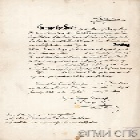 Documents of the XX century 37In the documents of the collection all the diversity of the city's history in the XXth century can be traced and reflected: the First World War, the Revolution, the NEP, space exploration.
Documents of the XX century 37In the documents of the collection all the diversity of the city's history in the XXth century can be traced and reflected: the First World War, the Revolution, the NEP, space exploration.
A special place is occupied by the relics of the Great Patriotic War and Siege of Leningrad - personal complexes and selected documents of the city's defenders, partisans, residents of ... ↓
-
-
 V. N. Orlov's Collection 66The collection of Vladimir Nikolaevich Orlov numbering about 12 thousand items is stored in the Museum-apartment of A.A.Blok, a branch of the State Museum of History of St. Petersburg.
V. N. Orlov's Collection 66The collection of Vladimir Nikolaevich Orlov numbering about 12 thousand items is stored in the Museum-apartment of A.A.Blok, a branch of the State Museum of History of St. Petersburg.
The composition of the collection was determined by the interests of its donator Vladimir Nikolaevich Orlov (1908-1985) —the researcher of the life and works of A.A.Blok, the literary ... ↓-
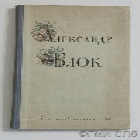 Orlov's book collection 25For V.N.Orlov, a writer and scientist, his extensive library was not a collection, but the working library, which reflected the research interests of Vladimir Nikolayevich —from the literature of the early XIX century and history of the Decembrist movement to books of the Soviet poets and writers.
Orlov's book collection 25For V.N.Orlov, a writer and scientist, his extensive library was not a collection, but the working library, which reflected the research interests of Vladimir Nikolayevich —from the literature of the early XIX century and history of the Decembrist movement to books of the Soviet poets and writers.
All books can be divided into several sections:
lifetime ... ↓-
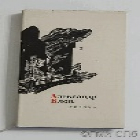 Books about A.A.Blok and his time 25More than half a century V.N.Orlov was persistently engaged in the study of the creative biography of Alexander Blok. Many editions of the collected works of the poet came out edited with commentary and introductory articles by Vladimir Nikolaevich. The books about Blok "the Poet and the City", "Hello, Alexander Blok", "Humayun", and etc. were written by him.
Books about A.A.Blok and his time 25More than half a century V.N.Orlov was persistently engaged in the study of the creative biography of Alexander Blok. Many editions of the collected works of the poet came out edited with commentary and introductory articles by Vladimir Nikolaevich. The books about Blok "the Poet and the City", "Hello, Alexander Blok", "Humayun", and etc. were written by him.
-
-
-
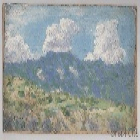 Painting 9A few works of easel painting collected by V.N.Orlov were made by first class artists O.E.Braz, Moscow painter, theatre artist P.B.Williams, K.A.Korovin, B.M.Kustodiev, E.E.Lansere, K.S.Petrov–Vodkin, a follower of I.E.Repin — V. G. Tikhov etc.
Painting 9A few works of easel painting collected by V.N.Orlov were made by first class artists O.E.Braz, Moscow painter, theatre artist P.B.Williams, K.A.Korovin, B.M.Kustodiev, E.E.Lansere, K.S.Petrov–Vodkin, a follower of I.E.Repin — V. G. Tikhov etc. -
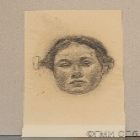 Graphics 21The main and most interesting part of V.N.Orlov's art collection are drawings, watercolors, theatrical sketches and prints by the artists of the "World of Art" circle.
Graphics 21The main and most interesting part of V.N.Orlov's art collection are drawings, watercolors, theatrical sketches and prints by the artists of the "World of Art" circle. -
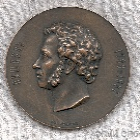 Medals 8In Orlov’s small collection of medallic art there are samples of domestic memorabilia, commemorative, portrait and souvenir medals. The most valuable are the works of A.F.Vasyutinsky, I.B.Gass, M.L.Dillon, M.A.Skudnov, S.Y.Yudin - the medals of the XVIII - XX centuries.
Medals 8In Orlov’s small collection of medallic art there are samples of domestic memorabilia, commemorative, portrait and souvenir medals. The most valuable are the works of A.F.Vasyutinsky, I.B.Gass, M.L.Dillon, M.A.Skudnov, S.Y.Yudin - the medals of the XVIII - XX centuries. -
 Photos 3In V.N.Orlov’s Fund several portraits of Vladimir Nikolayevich are kept together with photos of B.L.Pasternak, S.I.Chikovani, G.N.Leonidze.
Photos 3In V.N.Orlov’s Fund several portraits of Vladimir Nikolayevich are kept together with photos of B.L.Pasternak, S.I.Chikovani, G.N.Leonidze.
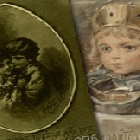
For information: +7 (812) 230-83-92
-
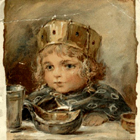 Collection of postcards 214More than 80 thousand items. The basic collection of the fund includes: Russian postcards printed earlier than 1917 - about 18 thousand items; Soviet postcards - more than 42 thousand items; foreign postcards - more than 21 thousand items. The chronological framework of the basic collection covers the period from the end of XIX century to the 1980s.
Collection of postcards 214More than 80 thousand items. The basic collection of the fund includes: Russian postcards printed earlier than 1917 - about 18 thousand items; Soviet postcards - more than 42 thousand items; foreign postcards - more than 21 thousand items. The chronological framework of the basic collection covers the period from the end of XIX century to the 1980s.-
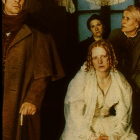 "Artistic" postcards 10Portraits of actors and actresses, scenes from operas, dramas, movies, etc.
"Artistic" postcards 10Portraits of actors and actresses, scenes from operas, dramas, movies, etc. -
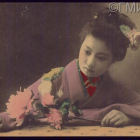 "Glamorous" postcards 10Female images, including the nude ones
"Glamorous" postcards 10Female images, including the nude ones -
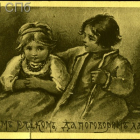 Authorial postcards 13An authorial postcard is a postcard with a painting created by the artist directly for it. The subjects of the authorial cards are diverse: genre and historical scenes, cityscapes and nature, historical, literary, and theatrical characters, woman and fashion.
Authorial postcards 13An authorial postcard is a postcard with a painting created by the artist directly for it. The subjects of the authorial cards are diverse: genre and historical scenes, cityscapes and nature, historical, literary, and theatrical characters, woman and fashion. -
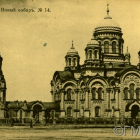 Urban views 11Urban views, or postcards with views of cities, memorial sites, attractions constitute a large part of the collection. Cityscape card is not only a cultural monument, but also a source of knowledge about the past. To get an idea of many not existing or distorted monuments of architecture, to understand how whole ensembles of squares and streets at one time or another looked like one can only ... ↓
Urban views 11Urban views, or postcards with views of cities, memorial sites, attractions constitute a large part of the collection. Cityscape card is not only a cultural monument, but also a source of knowledge about the past. To get an idea of many not existing or distorted monuments of architecture, to understand how whole ensembles of squares and streets at one time or another looked like one can only ... ↓ -
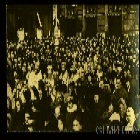 Documentary postcards 5Documentary postcard – a postcard with images of important historical events, ceremonies, political and artistic events, photos from places of natural disasters, military campaigns and battles. Documentary postcards were especially popular in the difficult war and revolutionary years. So, during the Russo-Japanese War photographers of the Community of Saint Eugenia made a lot of pictures of ... ↓
Documentary postcards 5Documentary postcard – a postcard with images of important historical events, ceremonies, political and artistic events, photos from places of natural disasters, military campaigns and battles. Documentary postcards were especially popular in the difficult war and revolutionary years. So, during the Russo-Japanese War photographers of the Community of Saint Eugenia made a lot of pictures of ... ↓ -
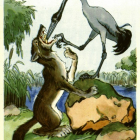 Illustrations 10Illustrations are the cards with illustrations to the works of writers, poets, playwrights, to fairy tales, Russian epics and songs. The Community of St. Eugenia published a series of postcards with illustrations for the works of the poet in honor of the centenary of Alexander Pushkin’s burth. The artists who worked for it were N.N Karazin, E.M.Boehm, M.A.Zichy, V.M.Vasnetsov, etc. The theme ... ↓
Illustrations 10Illustrations are the cards with illustrations to the works of writers, poets, playwrights, to fairy tales, Russian epics and songs. The Community of St. Eugenia published a series of postcards with illustrations for the works of the poet in honor of the centenary of Alexander Pushkin’s burth. The artists who worked for it were N.N Karazin, E.M.Boehm, M.A.Zichy, V.M.Vasnetsov, etc. The theme ... ↓ -
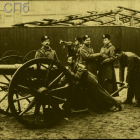 Military postcards 10Cards with different types of troops
Military postcards 10Cards with different types of troops -
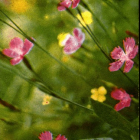 Flora and fauna 10Images of animals and plants in wild nature and in zoos, botanical gardens
Flora and fauna 10Images of animals and plants in wild nature and in zoos, botanical gardens -
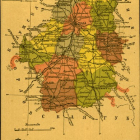 Postcards with maps 25A large series of open letters with the maps of provinces and regions of the Russian Empire, issued by the Head Office of Publications "Russia" (St. Petersburg), appears to be a perfect educational material for the study of our country.
Postcards with maps 25A large series of open letters with the maps of provinces and regions of the Russian Empire, issued by the Head Office of Publications "Russia" (St. Petersburg), appears to be a perfect educational material for the study of our country.
In addition to the map the coat of arms of the province was depicted together with the brief statistical information about the ... ↓ -
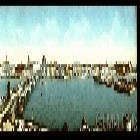 Panoramic postcards 5Panoramic postcard – a postcard with the image of the terrain, characterized by wide viewing angle. Panoramic postcards can be of the enlarged horizontally size or consist of several cards in conventional format.
Panoramic postcards 5Panoramic postcard – a postcard with the image of the terrain, characterized by wide viewing angle. Panoramic postcards can be of the enlarged horizontally size or consist of several cards in conventional format. -
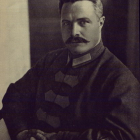 Personalities 20Portraits of the prominent statesmen, public and cultural figures, military leaders, scientists and others
Personalities 20Portraits of the prominent statesmen, public and cultural figures, military leaders, scientists and others -
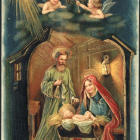 Studio greeting cards 10The most common type of cards – greeting ones, dedicated to some holiday. In pre-revolutionary Russia, for example, the postcards — greetings for Christmas, Easter, Saint's Day, more rarely for New Year — were most popular. Greeting cards were issued by almost all publishers. Many open letters were imported from Europe, which created more competition and forced publishers to find new ... ↓
Studio greeting cards 10The most common type of cards – greeting ones, dedicated to some holiday. In pre-revolutionary Russia, for example, the postcards — greetings for Christmas, Easter, Saint's Day, more rarely for New Year — were most popular. Greeting cards were issued by almost all publishers. Many open letters were imported from Europe, which created more competition and forced publishers to find new ... ↓ -
 Political postcards 10Promotional postcards, posters, cartoons
Political postcards 10Promotional postcards, posters, cartoons -
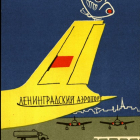 Advertising postcards 10Postcards, advertising firms or goods as well as cards, announcing cultural events
Advertising postcards 10Postcards, advertising firms or goods as well as cards, announcing cultural events -
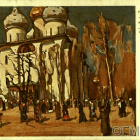 Reproductions 10Postcards with reproductions of the works of fine art
Reproductions 10Postcards with reproductions of the works of fine art -
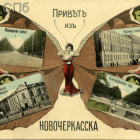 Souvenir postcards 10Gift cards ("Gruss aus...", "Greetings from...", "Souvenir de...") – are cards "in memory" associated with the memories of someone or something and containing the appropriate treatment. These cards are specially created artistic compositions using hand-drawn or photographic images of a variety of attractions, famous places, etc. This series of ... ↓
Souvenir postcards 10Gift cards ("Gruss aus...", "Greetings from...", "Souvenir de...") – are cards "in memory" associated with the memories of someone or something and containing the appropriate treatment. These cards are specially created artistic compositions using hand-drawn or photographic images of a variety of attractions, famous places, etc. This series of ... ↓ -
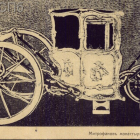 Transport postcards 15Postcards with the images of the means of transport and transport infrastructure
Transport postcards 15Postcards with the images of the means of transport and transport infrastructure -
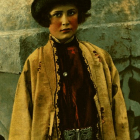 Ethnographic postcards 20A series of postcards depicting people in national costumes
Ethnographic postcards 20A series of postcards depicting people in national costumes
-
-
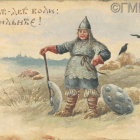 Tagrin's collection 369More than 570 000 items. Russia's largest collection of postcards on various subjects: landscapes, greetings, reproductions of works of art, personalities, banner greeting cards, etc. The chronological framework of the collection - 1880-1980's.
Tagrin's collection 369More than 570 000 items. Russia's largest collection of postcards on various subjects: landscapes, greetings, reproductions of works of art, personalities, banner greeting cards, etc. The chronological framework of the collection - 1880-1980's.-
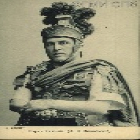 "Artistic" postcards 18Portraits of actors and actresses, scenes from operas, dramas, movies, etc.
"Artistic" postcards 18Portraits of actors and actresses, scenes from operas, dramas, movies, etc. -
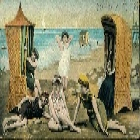 "Glamorous" postcards 19Female images, including nude ones
"Glamorous" postcards 19Female images, including nude ones -
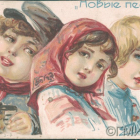 Authorial postcards 38An authorial postcard is a postcard with a painting created by the artist directly for it. The subjects of the authorial cards are diverse: genre and historical scenes, cityscapes and nature, historical, literary, and theatrical characters, woman and fashion.
Authorial postcards 38An authorial postcard is a postcard with a painting created by the artist directly for it. The subjects of the authorial cards are diverse: genre and historical scenes, cityscapes and nature, historical, literary, and theatrical characters, woman and fashion. -
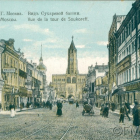 Urban views 20Urban views, or postcards with views of cities, memorial sites, attractions constitute a large part of the collection. Cityscape card is not only a cultural monument, but also a source of knowledge about the past. To get an idea of many not existing or distorted monuments of architecture, to understand how whole ensembles of squares and streets at one time or another looked like one can only ... ↓
Urban views 20Urban views, or postcards with views of cities, memorial sites, attractions constitute a large part of the collection. Cityscape card is not only a cultural monument, but also a source of knowledge about the past. To get an idea of many not existing or distorted monuments of architecture, to understand how whole ensembles of squares and streets at one time or another looked like one can only ... ↓ -
 Documentary postcards 10Documentary postcard – a postcard with images of important historical events, ceremonies, political and artistic events, photos from places of natural disasters, military campaigns and battles. Documentary postcards were especially popular in the difficult war and revolutionary years. So, during the Russo-Japanese War photographers of the Community of Saint Eugenia made a lot of pictures of ... ↓
Documentary postcards 10Documentary postcard – a postcard with images of important historical events, ceremonies, political and artistic events, photos from places of natural disasters, military campaigns and battles. Documentary postcards were especially popular in the difficult war and revolutionary years. So, during the Russo-Japanese War photographers of the Community of Saint Eugenia made a lot of pictures of ... ↓ -
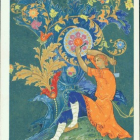 Illustrations 16Illustrations are the cards with illustrations to the works of writers, poets, playwrights, to fairy tales, Russian epics and songs. The Community of St. Eugenia published a series of postcards with illustrations for the works of the poet in honor of the centenary of Alexander Pushkin’s burth. The artists who worked for it were N.N Karazin, E.M.Boehm, M.A.Zichy, V.M.Vasnetsov, etc. The theme ... ↓
Illustrations 16Illustrations are the cards with illustrations to the works of writers, poets, playwrights, to fairy tales, Russian epics and songs. The Community of St. Eugenia published a series of postcards with illustrations for the works of the poet in honor of the centenary of Alexander Pushkin’s burth. The artists who worked for it were N.N Karazin, E.M.Boehm, M.A.Zichy, V.M.Vasnetsov, etc. The theme ... ↓ -
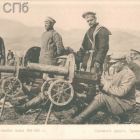 Military postcards 18Cards with different types of troops. The postcards with the images of air and underwater vehicles used for military purposes are of special interest
Military postcards 18Cards with different types of troops. The postcards with the images of air and underwater vehicles used for military purposes are of special interest -
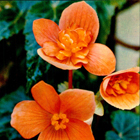 Flora and fauna 26Images of animals and plants in wild nature and in zoos, botanical gardens
Flora and fauna 26Images of animals and plants in wild nature and in zoos, botanical gardens -
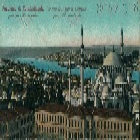 Panoramic postcards 10Panoramic postcard – a postcard with the image of the terrain, characterized by wide viewing angle. Panoramic postcards can be of the enlarged horizontally size or consist of several cards in conventional format.
Panoramic postcards 10Panoramic postcard – a postcard with the image of the terrain, characterized by wide viewing angle. Panoramic postcards can be of the enlarged horizontally size or consist of several cards in conventional format. -
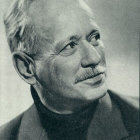 Personalities 45Portraits of the prominent statesmen, public and cultural figures, military leaders, scientists and others
Personalities 45Portraits of the prominent statesmen, public and cultural figures, military leaders, scientists and others -
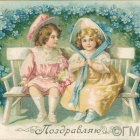 Studio greeting cards 23Postcards on various holidays
Studio greeting cards 23Postcards on various holidays -
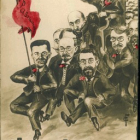 Political postcards 20Promotional postcards, posters, cartoons
Political postcards 20Promotional postcards, posters, cartoons -
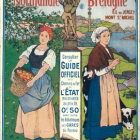 Advertising postcards 20Postcards, advertising firms or goods as well as cards, announcing cultural events
Advertising postcards 20Postcards, advertising firms or goods as well as cards, announcing cultural events -
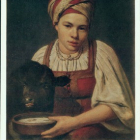 Reproductions 20Postcards with reproductions of the works of fine art
Reproductions 20Postcards with reproductions of the works of fine art -
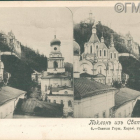 Stereo postcards 9Cards with 3-D effect
Stereo postcards 9Cards with 3-D effect -
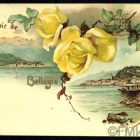 Souvenir postcards 16Cards "For memory" associated with the memories of someone or something and containing the appropriate treatment.
Souvenir postcards 16Cards "For memory" associated with the memories of someone or something and containing the appropriate treatment. -
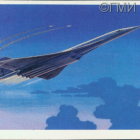 Transport postcards 21Postcards with the image of the means of transport and transport infrastructur
Transport postcards 21Postcards with the image of the means of transport and transport infrastructur -
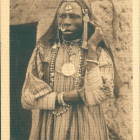 Ethnographic postcards 20A series of postcards depicting people in national costumes
Ethnographic postcards 20A series of postcards depicting people in national costumes
-

